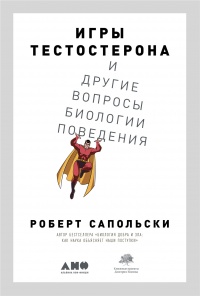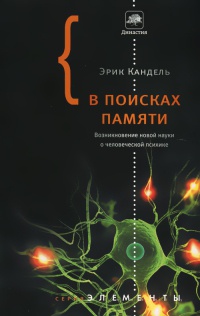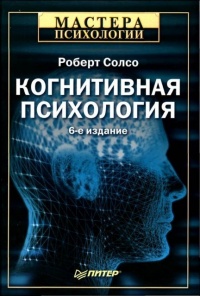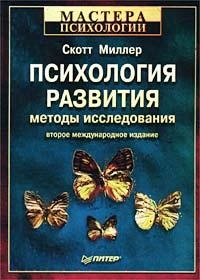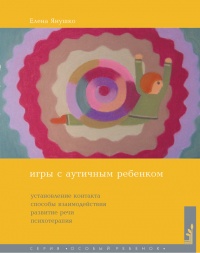Книга Психология стресса - Роберт Сапольски
Шрифт:
Интервал:
Закладка:
(1981) : 581; Meaney, M., Aitken, D., Bhatnager, S., van Berkel, C., and Sapolsky, R., “Effect of neonatal handling on age-related impairments associated with the hippocampus,” Science 239 (1988): 766.
Стресс и глюкокортикоиды разрушают гиппокамп у обезьян: Uno, H., Tarara, R., Else, J., Suleman, M., and Sapolsky, R., “Hippocampal damage associated with prolonged and fatal stress in primates,” Journal of Neuroscience 9 (1989): 1705; Sapolsky, R., Uno, H., Rebert, C., and Finch, C., “Hippocampal damage associated with prolonged glucocorticoid exposure in primates,” Journal of Neuroscience 10 (1990): 2897; Uno, H., Eisele, S., Sakai, A., Shelton, S., Baker, E., DeJesus, O., and Holden, J., “Neurotoxicity of glucocorticoids in the primate brain,” Hormones and Behavior 28 (1994): 336.
С. 252. Атрофия гиппокампа при болезни Кушинга: Starkman, M., Gebarski, S., Berent, S., and Schteingart, D., “Hippocampal formation volume, memory dysfunction, and cortisol levels in patients with Cushing’s syndrome,” Biological Psychiatry 32 (1992): 756.
С. 252. Атрофия гиппокампа в ПТСР: Bremner, J., Randall, P., Scott, T., Bronen, R., et al., “MRI-based measurement of hippocampal volume in patients with combat-related PTSD,” American Journal of Psychiatry 152 (1995): 973; Gurvits, T., Shenton, M., Hokama, H., Ohta, H., Lasko, N., Gilbertson, M., et al., “Magnetic resonance imaging study of hippocampal volume in chronic, combat-related posttraumatic stress disorder,” Biological Psychiatry 40 (1996): 1091; Bremner, J., Randall, P., Vermetten, E., Staib, L., Bronen, A., et al., “Magnetic resonance imaging-based measurement of hippocampal volume in PTSD related to childhood physical and sexual abuse—a preliminary report,” Biological Psychiatry 41 (1997): 23. Большинство специалистов в этой области считают, что снижение объема гиппокампа при ПТСРносит необратимый характер. Однако недавний отчет показывает, что это может быть и не так: Vermetten, E., Vythilingam, M., Southwick, S. M., Charney, D. S., and Bremner, J. D., “Long-term treatment with paroxetine increases verbal declarative memory and hippocampal volume in posttraumatic stress disorder,” Biological Psychiatry 54 (2003): 693.
С. 253. Атрофия гиппокампа при депрессии: Sheline, Y., Wang, P., Gado, M., Csernansky, J., Vannier, M., “Hippocampal atrophy in recurrent major depression,” Proceedings of the National Academy of Sciences, USA 93 (1996): 3908-4003; Sheline, Y., Sanghavi, M., Mintun, M., Gado, M., “Depression duration but not age predicts hippocampal volume loss in medical healthy women with recurrent major depression,” Journal of Neuroscience 19 (1999): 5034-41; Bremner, J., Narayan, M., Anderson, E., Staib, L., Miller, H., Charney, D., “Hippocampal volume reduction in major depression,” American Journal of Psychiatry 157 (2000): 115-27; Sheline, Y., Gado, M., Kraemer, H., “Untreated depression and hippocampal volume loss,” American Journal of Psychiatry 160 (2003): 1516; MacQueen, G., Campbell, S., McEwen, B., Macdonald, K., Amano,
S., Joffe, R., Nahmias, C., Young, L., “Course of illness, hippocampal function, and hippocampal volume in major depression,” Proceedings of the National Academy of Sciences, USA 100 (2002): 1387.
С. 253. Нарушение суточного ритма и атрофия гиппокампа: Cho, K., “Chronic ‘jet lag’ produces temporal lobe atrophy and spatial cognitive deficits,” Nature Neuroscience 4 (2001): 567.
С. 253. Нормативное старение: Lupien, S., de Leon, M., de Santi, S., Convit, A., Tarshish, C., Nair, N., Thakur, M., McEwen, B., Hauger, R., Meaney, M., “Cortisol levels during human aging predict hippocampal atrophy and memory deficits,” Nature Neuroscience 1 (1998): 69-73.
С. 253. Связь глюкокортикоидов с неврологическими инсультами: более высокие уровни глюкокортикоидов ассоциируются с более тяжелыми последствиями инсульта у людей: Astrom, M., Olsson, T., and Asplund, K., “Different linkage of depression to hypercortisolism early versus later after stroke,” Stroke 24 (1993): 52.
Проблемы и осложнения рассматриваются в Sapolsky, R., “Glucocorticoids and hippocampal atrophy in neuropsychiatric disorders,” Archives of General Psychiatry 57
(2000) : 925.
Атрофия при синдроме Кушинга как обратимый феномен: Bourdeau, I., Gbard, C., Noel, B., Leclerc, I., Cordeau, M., Belair, M., Lesage, J., Lafontaine, L., Lacroix, A., “Loss of brain volume in endogenous Cushing’s syndrome and its reversibility after correction of hypercortisolism,” Journal of Clinical Endocrinology and Metabolism 87
(2002) : 1949.
С. 255. Глюкокортикоиды способствуют воспалениям в поврежденной нервной системе: Dinkel, K., Ogle, W., Sapolsky, R., “Glucocorticoids and CNS inflammation,” Journal of NeuroVirology 8 (2002): 513; Dinkel, K., MacPherson, A., Sapolsky, R., “Novel glucocorticoid effects on acute inflammation in the central nervous system,” Journal of Neurochemistry 84 (2003): 705; Dinkel, K., Dhabhar, F., Sapolsky, R., “Neurotoxic effects of polymorphonuclear granulocytes on hippocampal primary cultures,” Proceedings of the National Academy of Sciences, USA 101 (2004): 331.
С. 256. Глюкокортикоиды и их клиническое использование применительно к больным СПИДом: Bozzette, S., Sattler, F., Chiu, J., Wu, A., Gluckstein, D., et al., “A controlled trial of early adjunctive treatment with corticosteroids for Pneumocystis carinii pneumonia in the acquired immunodeficiency syndrome,” New England Journal of Medicine 323 (1990): 1451; Gagnon, S., Boota, A., Fischl, M., Baier, H., Kirksey, O., La Voie, L., “Corticosteroids as adjunctive therapy for severe pneumocystis carinii pneumonia in the acquired immunodeficiency syndrome: a double-blind, placebocontrolled trial,” New England Journal of Medicine 323 (1990): 1444.
С. 257. Сильная реакция на стресс после неврологических инсультов у людей: Feibel, J., Hardi, P., Campbell, M., Goldstein, N., and Joynt, R., “Prognostic value of the stress response following stroke,” Journal of the American Medical Association 238 (1977): 1374. Блокирование выделения глюкокортикоидов после инсульта у крысы оказывает нейрозащитный эффект: Stein, B., and Sapolsky, R., “Chemical adrenalectomy reduces hippocampal damage induced by kainic acid,” Brain Research 473 (1988): 175; Morse, J., and Davis, J., “Chemical adrenalectomy protects hippocampal cells following ischemia,” Society for Neuroscience Abstracts 15 (1989): 149.4.
С. 257. Цитата Вуди Аллена из фильма «Спящий».
Глава 11. Стресс и сладкий ночной сон
С. 259. Базовые сведения о сне: Pace-Schott, E., Hobson, J., “The neurobiology of sleep; genetics, cellular physiology and subcortical networks,” Nature Reviews Neuroscience 3 (2002): 591; Siegel, J., “Why we sleep,” Scientific American (November 2003): 92.
Сноска. Дикие утки: Rattonborg, N., Lima, S., Amlaner, C., “Half-awake to the risk of predation,” Nature (1999): 397. Дельфины и птицы: Siegel, “Why we sleep,” op. cit.
С. 260. Функция мозга в разных фазах сна: Braun, A., Balkin, T., Wesensten, N., Gwadry, F., Carson, R., Varga, M., Baldwin, P., Belenky, G., Herscovitch, P., “Dissociated patterns of activity in visual cortices and their projections during human rapid eye movement sleep,” Science 279 (1998): 91. Израсходование энергии как сигнал ко сну: Benington, J., Heller, H., “Restoration of brain energy metabolism as the function of sleep,” Progress in Neurobiology 45 (1995): 347. Почему сновидения призрачны: Sapolsky, R., “Wild dreams,” Discover 22 (2001): 36.





















